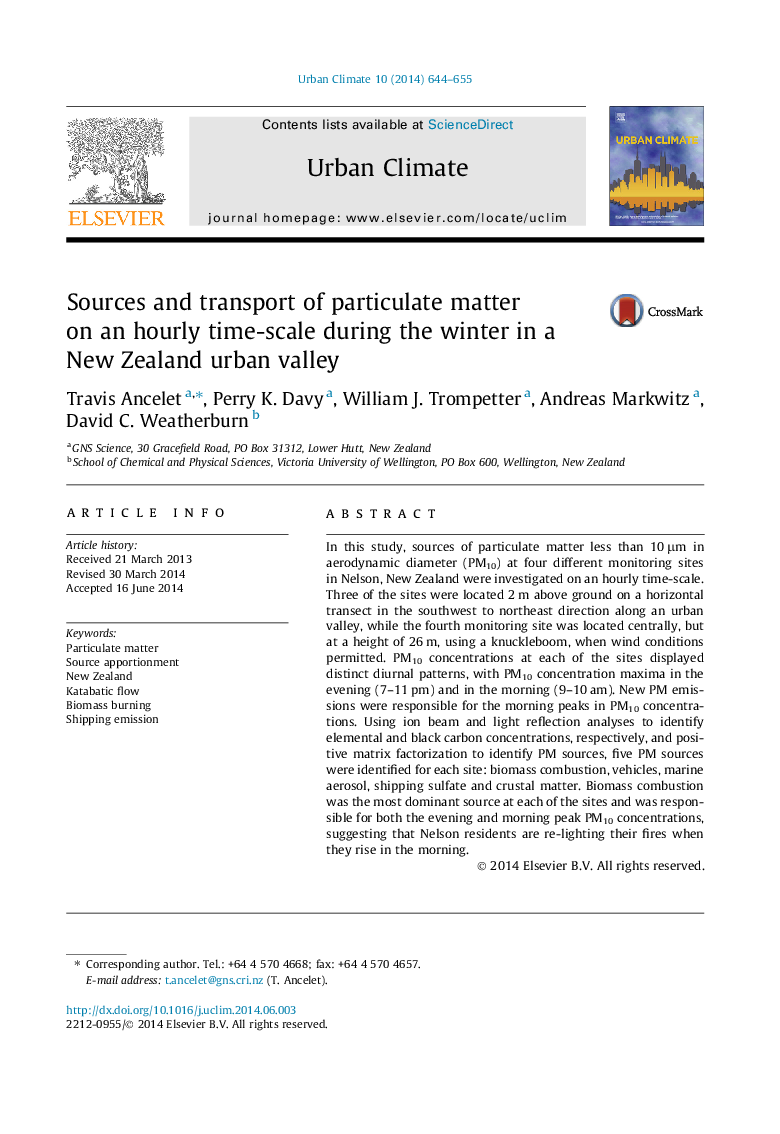| Article ID | Journal | Published Year | Pages | File Type |
|---|---|---|---|---|
| 10260277 | Urban Climate | 2014 | 12 Pages |
Abstract
In this study, sources of particulate matter less than 10 μm in aerodynamic diameter (PM10) at four different monitoring sites in Nelson, New Zealand were investigated on an hourly time-scale. Three of the sites were located 2 m above ground on a horizontal transect in the southwest to northeast direction along an urban valley, while the fourth monitoring site was located centrally, but at a height of 26 m, using a knuckleboom, when wind conditions permitted. PM10 concentrations at each of the sites displayed distinct diurnal patterns, with PM10 concentration maxima in the evening (7-11 pm) and in the morning (9-10 am). New PM emissions were responsible for the morning peaks in PM10 concentrations. Using ion beam and light reflection analyses to identify elemental and black carbon concentrations, respectively, and positive matrix factorization to identify PM sources, five PM sources were identified for each site: biomass combustion, vehicles, marine aerosol, shipping sulfate and crustal matter. Biomass combustion was the most dominant source at each of the sites and was responsible for both the evening and morning peak PM10 concentrations, suggesting that Nelson residents are re-lighting their fires when they rise in the morning.
Related Topics
Physical Sciences and Engineering
Earth and Planetary Sciences
Earth and Planetary Sciences (General)
Authors
Travis Ancelet, Perry K. Davy, William J. Trompetter, Andreas Markwitz, David C. Weatherburn,
